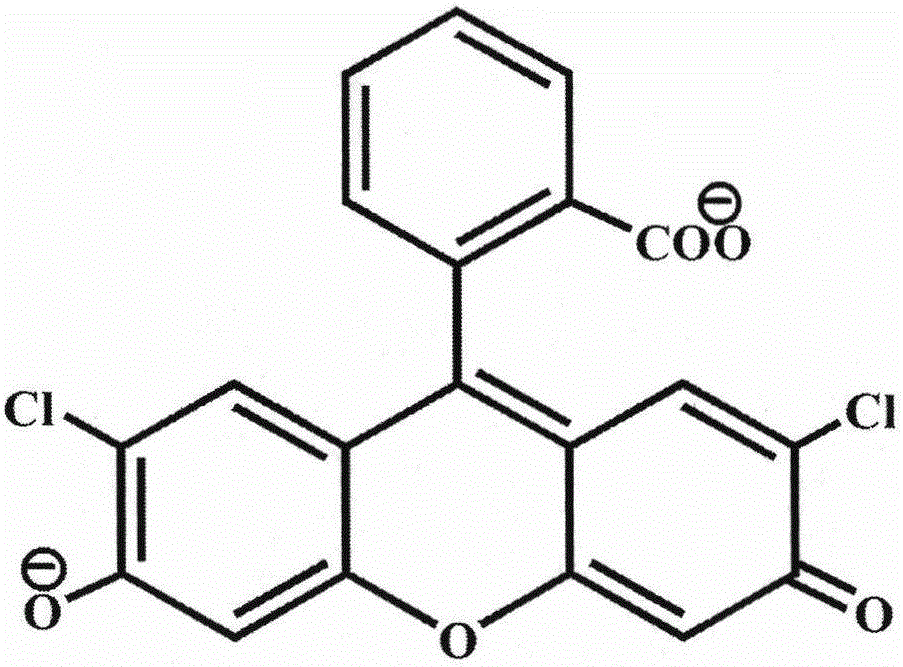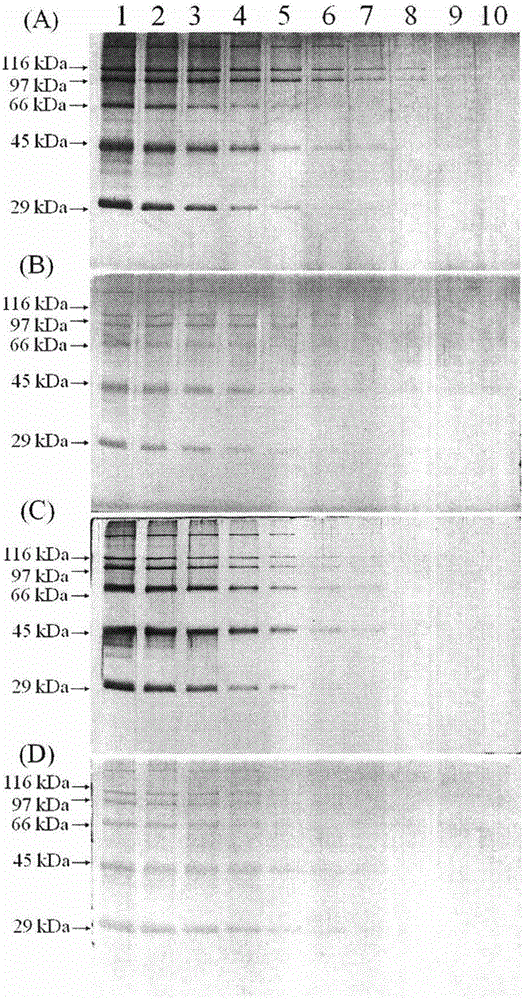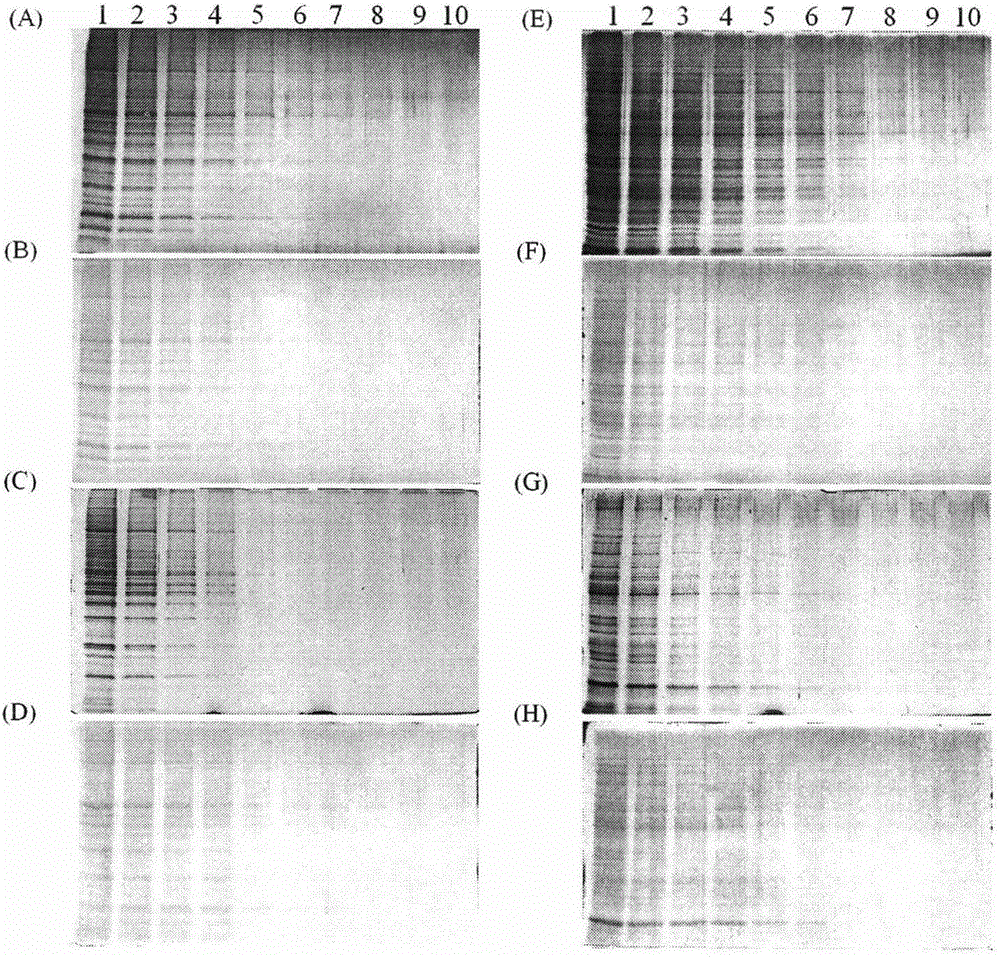2',7'-dichlorofluorescein and application of derivative thereof in protein detection
A dichlorofluorescein and protein detection technology, which is applied in the preparation of test samples, measuring devices, sampling, etc., can solve the problems of poor mass spectrometry compatibility, cumbersome operation, and poor reproducibility, achieving good reproducibility and simple operation Fast, low-cost results
- Summary
- Abstract
- Description
- Claims
- Application Information
AI Technical Summary
Problems solved by technology
Method used
Image
Examples
Embodiment 12
[0026] Example 12', 7'-dichlorofluorescein negative staining
[0027] figure 1 is the chemical structural formula of 2',7'-dichlorofluorescein.
[0028] Figure 2-5 The 2′,7′-dichlorofluorescein protein negative staining experiment was performed using the following steps:
[0029] 1) The gel after electrophoresis was stained in 0.3% 2',7'-dichlorofluorescein / 0.1% sodium carbonate / 50% methanol staining solution for 10 min.
[0030] 2) Discard the staining solution, and develop for 2 minutes in a developing solution of 1.4% citric acid / 1% trisodium citrate (pH=4).
[0031] 3) After gel staining, scan in reverse scanning mode on Epson V700 scanner.
PUM
 Login to View More
Login to View More Abstract
Description
Claims
Application Information
 Login to View More
Login to View More - R&D
- Intellectual Property
- Life Sciences
- Materials
- Tech Scout
- Unparalleled Data Quality
- Higher Quality Content
- 60% Fewer Hallucinations
Browse by: Latest US Patents, China's latest patents, Technical Efficacy Thesaurus, Application Domain, Technology Topic, Popular Technical Reports.
© 2025 PatSnap. All rights reserved.Legal|Privacy policy|Modern Slavery Act Transparency Statement|Sitemap|About US| Contact US: help@patsnap.com



